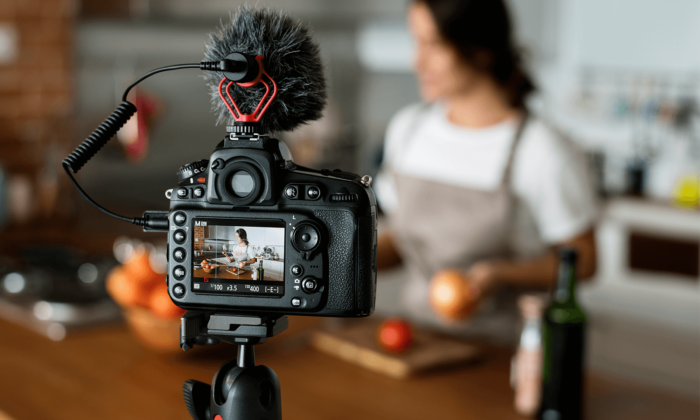
Lights, camera, action! Producing an engaging marketing video can be a daunting task. From brainstorming ideas to final editing, there are many steps along the way that can make or break your success.
But fear not! In this step-by-step guide, we’ll take you through everything you need to know to bring your script to life on the screen. Whether you’re a seasoned video producer or just starting out, our tips and tricks will help you create content that captivates your audience and drives results for your brand.
So grab some popcorn and get ready for lights-out production value with our comprehensive guide to producing winning marketing videos from script to screen.
Defining Objectives: Setting Clear Goals for Your Marketing Video

Setting clear objectives is paramount to the success of your video marketing campaign. Before diving into the creative process, take the time to define what you want to achieve with your video with the help of video production Kansas City.
Whether it’s increasing brand awareness, driving website traffic, generating leads, or promoting a specific product or service, clearly defined goals will guide the creative direction of your video and ensure that it aligns with your overall marketing strategy.
Developing a Compelling Script: Crafting a Story That Resonates with Your Audience
Start by outlining the key points you want to convey and structure them in a way that keeps the viewers engaged from beginning to end. Identify the core message or value proposition you want to communicate and think about how you can present it in a way that resonates with your audience.
Consider incorporating storytelling techniques such as the hero’s journey, testimonials, or relatable scenarios that your viewers can connect with. Infuse your script with personality, humor, or emotion to make it memorable and shareable.
Storyboarding and Shot Planning

Storyboarding is a vital step that allows you to visualize the flow of your video and plan the shots effectively. It is a visual representation of how your video will unfold, including the sequence of scenes, camera angles, and transitions.
By creating a storyboard, you can map out the visual progression of your video, ensuring that each shot contributes to the overall narrative and reinforces your key messages. Think about the visual elements that will enhance the storytelling process, such as colors, lighting, composition, and set design. Determine the shots you need to capture, including wide-angle shots, close-ups, product demonstrations, or customer interactions.
Additionally, think about how transitions between scenes can be used to create a seamless and engaging viewing experience. Storyboarding not only helps you stay organized during production but also provides a visual reference for communicating your vision to the production team.
Pre-production Essentials: Gathering Resources, Talent, and Locations
Begin by creating a detailed production schedule and budget to ensure that everything is properly planned and accounted for. Identify the equipment you’ll need, such as cameras, lighting, and sound gear, and ensure they are readily available or arrange for rentals. If your video involves actors or presenters, conduct auditions or casting calls to find the right talent for your project.
Consider the specific requirements of your video and scout for suitable locations that complement your story and visuals. Whether it’s a studio, office space, or outdoor setting, ensure that you have the necessary permissions and permits in place.
The pre-production phase is also an opportunity to develop a collaborative and cohesive team by assigning roles and responsibilities, such as the director, cinematographer, production assistant, and script supervisor.
Lights, Camera, Action: Capturing High-Quality Footage and Audio

Now comes the exciting part—shooting your video. Proper planning and execution during the production phase are essential to capturing high-quality footage and audio. Pay attention to lighting, framing, composition, and camera movements to create visually stunning shots.
Utilize professional-grade cameras and lenses to ensure sharpness, clarity, and color accuracy. Experiment with different camera angles and perspectives to add visual interest and enhance the storytelling.
In addition to visuals, audio quality is equally important. Invest in quality microphones and recording equipment to capture clear and crisp sound. Use external microphones when recording dialogue or interviews to minimize background noise and ensure optimal audio levels.
Consider using a dedicated sound recordist or audio engineer to monitor and adjust audio levels during the shoot. It’s crucial to capture multiple takes of each shot to have options during the editing phase and to account for any unforeseen issues that may arise during production.
Editing and Post-production Techniques
The editing process is where your video truly comes to life. It involves transforming the raw footage into a polished and cohesive narrative that engages and captivates your audience. Start by reviewing all the footage and selecting the best shots that align with your vision and storytelling.
Trim and arrange the selected shots in the desired sequence, ensuring smooth transitions between scenes. Pay attention to pacing, timing, and rhythm to create a seamless flow that holds the viewer’s attention. Enhance the visuals by applying color correction, adjusting brightness and contrast, and adding visual effects or motion graphics where appropriate.
Additionally, optimize the audio by adjusting levels, removing background noise, and adding background music or sound effects that enhance the mood and reinforce the message of your video.
Use text overlays or subtitles to emphasize key points, highlight calls to action, or provide additional context. Consider incorporating animations or graphics that align with your brand’s visual identity to create a consistent and professional look.
Experiment with different editing techniques, such as split screens, jump cuts, or time-lapse, to add visual interest and dynamic elements to your video. It is also essential to ensure that the video’s length is appropriate for the platform and audience you are targeting. Keep the editing process iterative, seeking feedback from colleagues or focus groups, and refining the video based on their input.
Incorporating Branding and Graphics

Consistency in branding helps establish trust, recognition, and a sense of professionalism. Integrate your brand’s visual identity into the video by including elements such as logos, fonts, colors, and visual motifs.
Place your logo strategically throughout the video to reinforce brand association and make it easily recognizable. Use consistent fonts and typography that align with your brand’s style guide. Select colors that are consistent with your brand palette and evoke the desired emotions or associations.
Additionally, consider using graphical elements, such as lower thirds or animated overlays, to highlight key messages, product features, or contact information. These elements not only reinforce your brand but also add visual interest and clarity to your video.
Pay attention to the placement and design of these elements to ensure they complement the overall visual aesthetic and do not distract from the main content. By incorporating branding and graphics thoughtfully, you create a cohesive brand experience that strengthens brand recognition and leaves a lasting impression on viewers.
Conclusion
Producing a great marketing video doesn’t have to be an intimidating task. By following the steps outlined in this guide, you can easily create videos that engage and captivate your audience.
From researching your target market to writing the script and editing the footage, there are many components that must come together for successful marketing videos. Following each of these steps will help ensure that you produce impactful videos that will get results. So start planning today and make sure your next marketing video is a hit!








